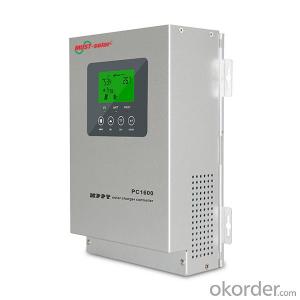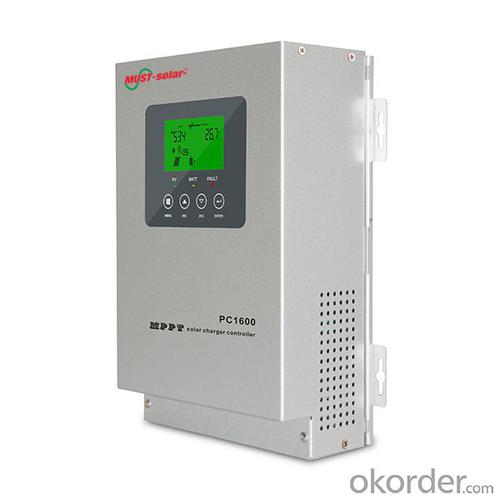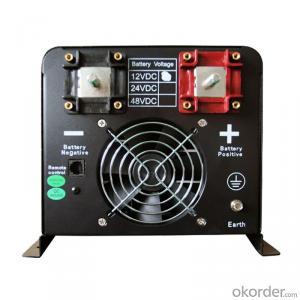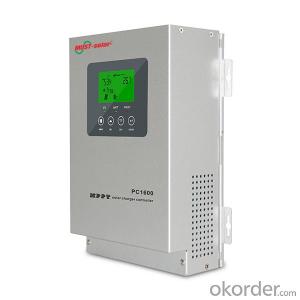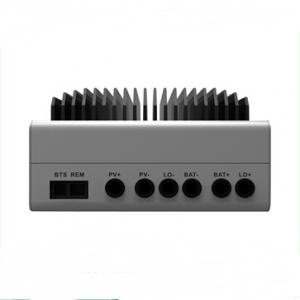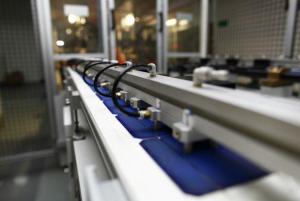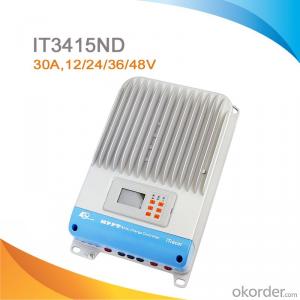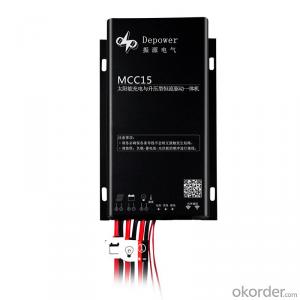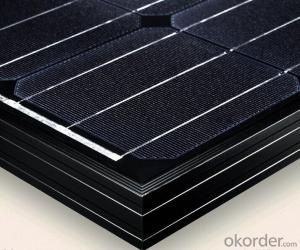Mppt Solar Charge Controller High Efficiency PC1600F SeriesMade in China
- Loading Port:
- China main port
- Payment Terms:
- TT OR LC
- Min Order Qty:
- 100 pc
- Supply Capability:
- 10000 pc/month
OKorder Service Pledge
OKorder Financial Service
You Might Also Like
Features:
·45A/60A MPPT solar charge controller
·12V/24V/36V/48V auto work
·PV Output :145v Max
·Several seconds tracking speed
·High Tracking efficiency of 99%
·Multiphase synchronous rectification technology
·Peak conversion efficiency of 98%
·DSP processors architecture ensures high speed and performance
·Multifunction LCD displays system data and status
·Four stages charging optimizes battery performance
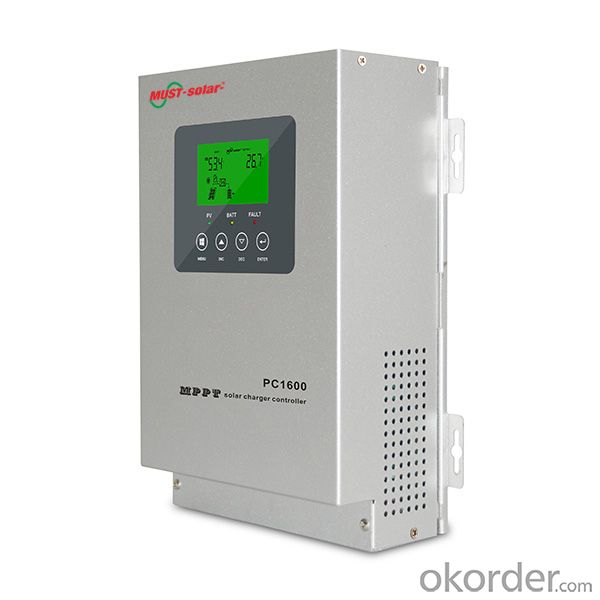
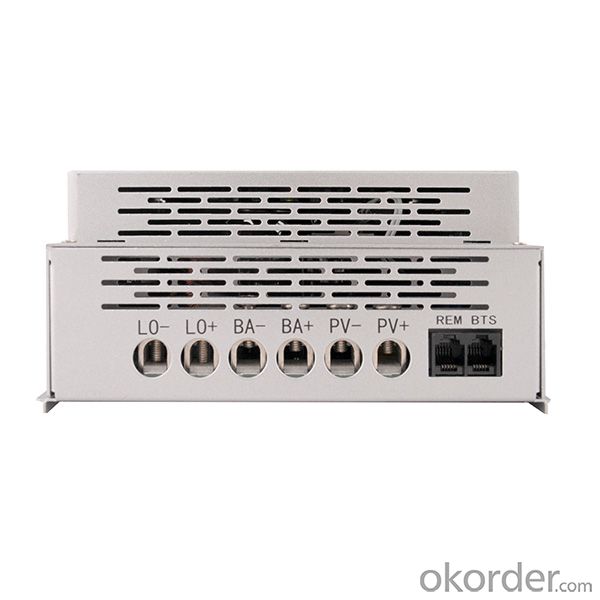
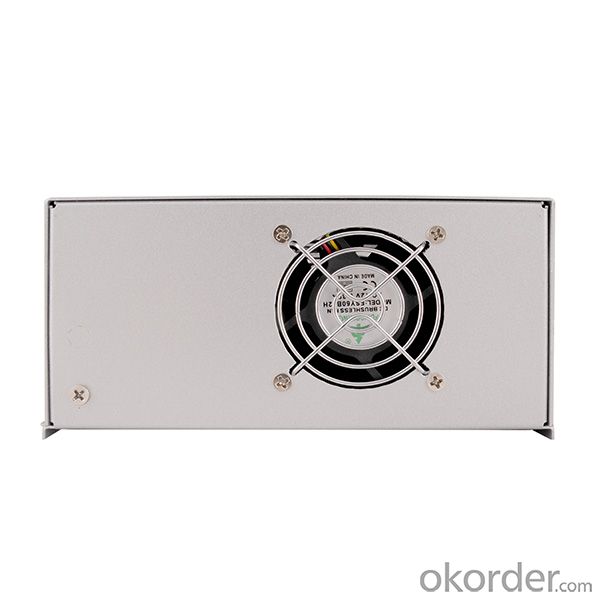
| Model | PC16-4515F | PC16-6015F | |
| Battery System Voltage | 12V/24V/36V/48 VDC (adjustable) | ||
| Charge Input | |||
| PV Open Circuit Voltage | Operational max = 145VDC temperature corrected VOC | ||
| Max PV Input Power(12V) | 600W | 800W | |
| Max PV Input Power(24V) | 1200W | 1600W | |
| Max PV Input Power(36V) | 1800W | 2400W | |
| Max PV Input Power(48V) | 2400W | 3200W | |
| Battery Voltage | |||
| Nominal Voltage | 12VDC/24VDC/36VDC/48VDC | ||
| Absorption Voltage | 13.5VDC/27.0VDC/40.5VDC/54.0VDC | ||
| Refloat Voltage | 13.7VDC/27.4 VDC/41.1VDC/54.8VDC | ||
| Float Voltage | 14.3VDC/28.6 VDC/42.9VDC/57.2VDC | ||
| Low Voltage Protection Point | 10.5VDC/21.0 VDC/31.5VDC/42.0VDC | ||
| DC Output | |||
| Output Voltage | 11.0~14.3VDC/22.0~28.6VDC/33.0~42.9VDC/44~57.2VDC | ||
| Max Charging Current | 45A amps continuous @ 40°C ambient | 60 amps continuous @ 40°C ambient | |
| Warning for low voltage | 11.5VDC/23.0 VDC/34.5VDC/46.0VDC | ||
| Cutoff for low voltage | 10.5VDC/21.0 VDC/31.5VDC/42.0VDC | ||
| Low voltage recovery | 11.5VDC/23.0VDC/34.5VDC/46.0VDC | ||
| Display | |||
| LED indication | Systematic operation, LV indication, LV protection, over charge protection, loads protection, short circuit protection | ||
| LCD display | Charge voltage, charge current, voltage of battery, capacity of battery, output current | ||
| Alarm | PV array short circuit protection, PV reverser polarity protection | ||
| Battery reverse polarity protection, Over charging protection | |||
| Output short circuit protection | |||
| Low voltage protection for storage battery | |||
| General specification | |||
| Environmental Rating | Indoor | ||
| Charge mode | MPPT, PWM, constant current—constant voltage, function of automatic protection for storage battery | ||
| Radiating mode | Fan cooling | ||
| Working mode | Four stage: Absorption CC, Absorption CV, Float CC, Float CV. | ||
| Peak Conversion efficiency | 98% | ||
| Environment | |||
| Environmental temperature | -25°C ~55°C | ||
| Ambient humidity | 0--90%,No condensation | ||
| Altitude | ≤3000m | ||
| Dimension | |||
| W*H* D(mm)/G.W(kg) | 167.6*257.1*82.9mm/3kg | 390*365*364mm(5pcs/carton) | |
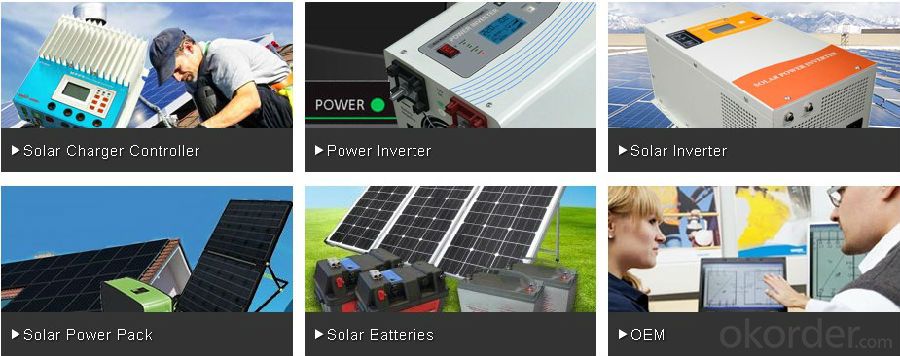
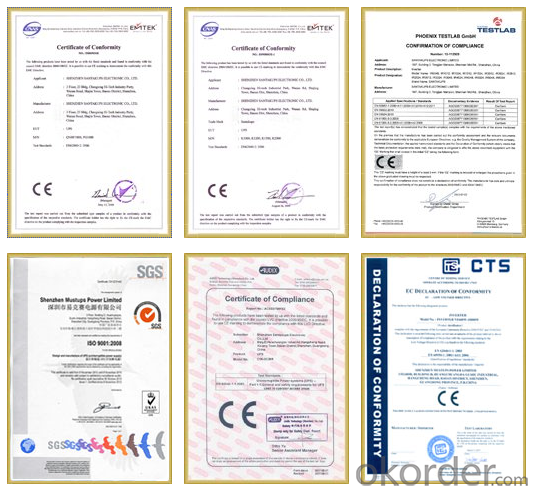
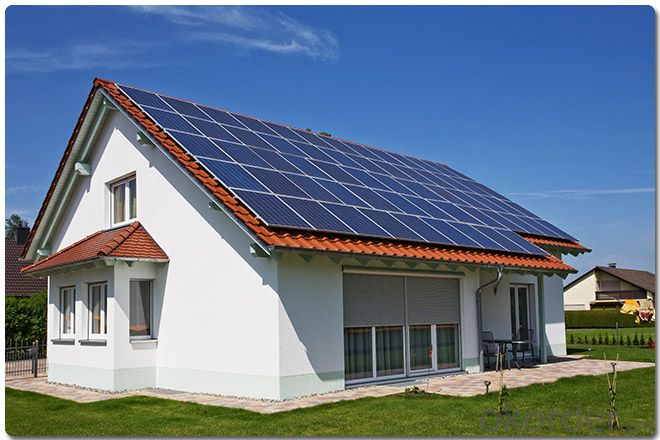
Warrenty
provides a 1~3 year limited warranty (“Warranty”) against defects in materials and workmanship for its Uninterruptible power supply, Power inverter/chargers, Solar charge controllers, Battery Products (“Product”).
The term of this Warranty begins on the Product(s) initial purchase date, or the date of receipt of the Product(s) by the end user, whichever is later. This must be indicated on the invoice, bill of sale, and/or warranty registration card submitted to MUST-Solar. This Warranty applies to the original MUST-Solar Product purchaser, and is transferable only if the Product remains installed in the original use location.
FAQ
1. How do I decide which system is right for me ?
For protection from long outages, include a generator or solar panels in your Must solar system. Shorter outages can be handled by a battery-only system.
2. Where my system will be installed ?
Must solar systems are usually wall-mounted near a home's main electrical (circuit breaker) panel.
3. How do I install my system ?
A must solar backup inverter is connected to a home electric system , we will supply detailed installation manual and videos for our customers .
- Q: Can a solar inverter be used with a solar car charging system?
- Yes, a solar inverter can be used with a solar car charging system. A solar inverter converts the direct current (DC) produced by solar panels into alternating current (AC) that can be used to charge electric vehicles, including solar cars. This allows the solar car charging system to efficiently convert and deliver the solar energy to charge the car's battery.
- Q: What are the safety measures to consider when installing a solar inverter?
- Some safety measures to consider when installing a solar inverter include: 1. Proper grounding: Ensure that the inverter is properly grounded to prevent electrical shocks and to maintain system stability. 2. Compliance with electrical codes: Adhere to local electrical codes and regulations to ensure safe installation and minimize the risk of electrical hazards. 3. Disconnecting power: Before starting the installation, make sure to disconnect power from the solar panels and the grid to avoid electrical accidents. 4. Proper ventilation: Install the inverter in a well-ventilated area to prevent overheating and potential fire hazards. 5. Adequate wiring: Use appropriate wire sizes and proper connections to handle the current capacity of the inverter and minimize the risk of electrical short circuits or fires. 6. Surge protection: Install surge protectors to safeguard the inverter and connected devices against power surges and lightning strikes. 7. Regular maintenance: Perform routine maintenance and inspections to ensure the inverter is functioning properly and to identify any potential safety issues. 8. Qualified installation: It is recommended to have the solar inverter installed by a qualified professional who is knowledgeable about electrical systems and safety measures. By following these safety measures, the risk of electrical accidents or system malfunctions can be minimized, ensuring a safe and reliable solar inverter installation.
- Q: What is the role of Maximum Power Point Tracking (MPPT) in a solar inverter?
- The role of Maximum Power Point Tracking (MPPT) in a solar inverter is to optimize the efficiency and output of the solar panels by continuously tracking and adjusting the operating point to the maximum power point. This ensures that the solar panels are operating at their highest possible power output, regardless of changes in environmental conditions. MPPT technology maximizes the utilization of solar energy and improves the overall performance of the solar inverter system.
- Q: How do you connect solar panels to a solar inverter?
- To connect solar panels to a solar inverter, you need to follow these steps: 1. Locate the positive (+) and negative (-) terminals on the solar panels. 2. Connect the positive terminal of the first solar panel to the positive terminal of the second panel using a solar PV cable or connector. Repeat this process for other panels if necessary. 3. Connect the negative terminal of the first panel to the negative terminal of the second panel using the same method as above. 4. Once all panels are connected in series or parallel, connect the positive terminal of the last panel to the positive terminal of the solar inverter. 5. Finally, connect the negative terminal of the last panel to the negative terminal of the solar inverter. It's important to ensure that the connections are secure and tightened properly to prevent any loose connections. Following the manufacturer's instructions and consulting a professional electrician or solar installer is recommended for a safe and efficient installation.
- Q: Can a solar inverter be used in conjunction with a power factor correction device?
- Yes, a solar inverter can be used in conjunction with a power factor correction device. The power factor correction device helps to improve the power factor of the electrical system, ensuring efficient and reliable operation. By installing a power factor correction device in combination with a solar inverter, the overall power quality can be enhanced, leading to optimized energy utilization and reduced electricity costs.
- Q: What is the maximum AC output power of a solar inverter?
- The maximum AC output power of a solar inverter depends on its specifications and capacity. It can range from a few hundred watts for small residential inverters to several megawatts for large-scale commercial or utility-grade inverters.
- Q: How does a solar inverter handle islanding detection and prevention?
- A solar inverter handles islanding detection and prevention by continuously monitoring the electrical grid's stability. It utilizes anti-islanding protection mechanisms to detect any abnormal conditions, such as voltage fluctuations or frequency deviations, that may indicate the presence of an islanded grid. In the event of islanding, the inverter immediately disconnects from the grid to prevent energy feed-in and effectively isolate the solar system. This ensures the safety of utility workers, prevents damage to equipment, and helps maintain the stability of the overall electrical grid.
- Q: Generally a large grid-connected photovoltaic power plant will have several inverters
- Group is the use of a number of grid-connected inverter and grid-connected AC power grid, the advantage is the loss of small, low cost of the cable (because the PV cable is more expensive), eliminating the cost of the convergence box, and multiple
- Q: How does a solar inverter handle reactive power injection into the grid?
- A solar inverter handles reactive power injection into the grid by using advanced control algorithms and capacitors. It actively monitors the grid's voltage and frequency and adjusts its output to maintain the required power factor. The inverter can either absorb or inject reactive power into the grid as needed to ensure a stable and balanced power flow.
- Q: Can a solar inverter be used with a single solar panel?
- Yes, a solar inverter can be used with a single solar panel. The purpose of a solar inverter is to convert the direct current (DC) produced by the solar panel into alternating current (AC) that can be used to power electrical devices or be fed back into the grid. Whether you have one solar panel or multiple panels, a solar inverter is necessary to convert the DC electricity into usable AC electricity.
Send your message to us
Mppt Solar Charge Controller High Efficiency PC1600F SeriesMade in China
- Loading Port:
- China main port
- Payment Terms:
- TT OR LC
- Min Order Qty:
- 100 pc
- Supply Capability:
- 10000 pc/month
OKorder Service Pledge
OKorder Financial Service
Similar products
Hot products
Hot Searches
Related keywords
